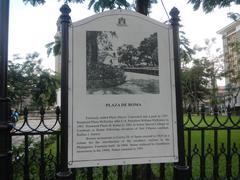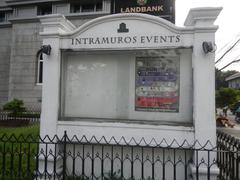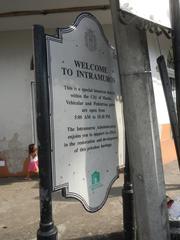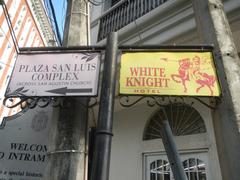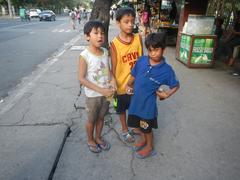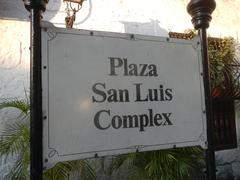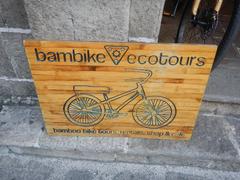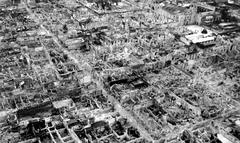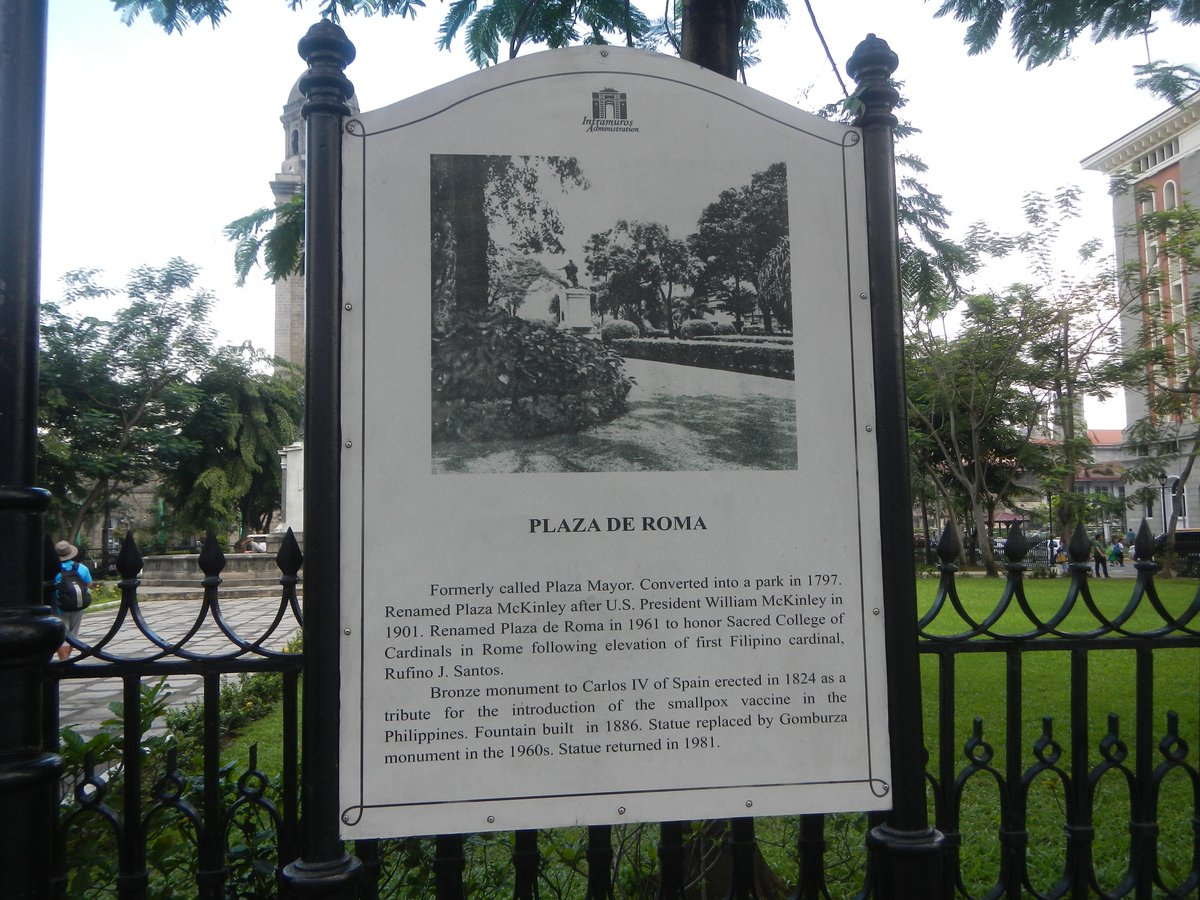
Intramuros Visiting Hours, Tickets, and Historical Sites Guide in Metro Manila
Date: 14/06/2025
Introduction to Intramuros: The Walled City of Manila
Intramuros, at the heart of Metro Manila, stands as a living chronicle of the Philippines’ rich and layered history. Once a vibrant pre-colonial settlement, it became the fortified seat of Spanish colonial administration in 1571, under Miguel López de Legazpi. Its imposing stone walls, bastions, and gates embodied both Spanish authority and Catholic influence in the archipelago. Over the centuries, Intramuros grew as a hub of commerce, education, and religion, housing iconic landmarks like Fort Santiago, San Agustin Church (a UNESCO World Heritage Site), and the Manila Cathedral (Taas Noo Pilipino; GeoPinas; Cultural Creatives).
Devastated during World War II, Intramuros has since undergone significant restoration, led by the Intramuros Administration since 1979. Today, it thrives as a vibrant cultural district, offering immersive tours, kalesa rides, museums, festivals, and interactive experiences. This guide provides updated information on visiting hours, ticketing, accessibility, and special events to help travelers and history enthusiasts fully appreciate Intramuros’ enduring legacy (Sinaunang Panahon; Intramuros Administration).
Table of Contents
- Introduction
- Historical Background and Cultural Significance
- Intramuros Today: Living Heritage and Cultural Hub
- Visiting Intramuros: Hours, Tickets, and Practical Tips
- Top Attractions and Landmarks
- Events, Festivals, and Interactive Experiences
- Visitor Amenities: Dining, Shopping, Accessibility, and Safety
- FAQs
- Conclusion and Travel Tips
- References
Historical Background and Cultural Significance
Pre-Colonial Foundations
Before the Spanish arrived, the area now known as Intramuros was already a thriving Tagalog settlement led by Rajah Sulayman. Its strategic location at the mouth of the Pasig River made it a vital hub for trade with China, Japan, and Arab nations (Taas Noo Pilipino).
Spanish Colonial Era and the Birth of the Walled City
In 1571, Spanish conquistadors led by Miguel López de Legazpi established Manila as the capital of the Spanish East Indies, constructing massive stone walls and fortifications to protect the city from invasions. The city’s grid layout, central plazas, churches, and administrative centers reflected European urban planning and the centrality of Catholicism (GeoPinas; Pinas Culture; Cultural Creatives).
Economic and Cultural Flourishing
During the Manila-Acapulco Galleon Trade (1565–1815), Intramuros became a cosmopolitan center, facilitating the exchange of goods, people, and ideas between Asia, Europe, and the Americas (GeoPinas). Religious orders established major churches and schools, shaping Filipino identity and spreading Christianity.
Social Hierarchies and Urban Life
Intramuros was reserved for Spanish officials and Filipino elites (“ilustrados”). Non-residents, especially local Filipinos and Chinese merchants, were required to leave the walled city by nightfall, reinforcing colonial social hierarchies (Taas Noo Pilipino). The opening of Manila to international trade in 1834 brought increased diversity and the rise of a new Filipino elite.
Revolution, American Occupation, and Modernization
Intramuros played a key role during the Philippine Revolution and the subsequent American period. The American administration modernized the city, improving sanitation and infrastructure while retaining much of its colonial character (Sinaunang Panahon).
World War II and Reconstruction
The Battle of Manila in 1945 devastated Intramuros, leaving only San Agustin Church standing. Post-war restoration efforts, spearheaded by the Intramuros Administration since 1979, have painstakingly reconstructed many of its historic sites (Sinaunang Panahon).
Intramuros Today: Living Heritage and Cultural Hub
Intramuros is a vibrant district that bridges Manila’s colonial past and modern present. Restored landmarks, museums, plazas, and educational institutions coexist with bustling cultural events, guided tours, and festivals. The ongoing preservation efforts make Intramuros a vital destination for understanding Philippine heritage (Cultural Creatives; Intramuros Administration).
Visiting Intramuros: Hours, Tickets, and Practical Tips
- General Visiting Hours: Daily, 8:00 AM to 6:00 PM. Individual attractions may vary; check their official pages before visiting.
- Entrance Fees: The Intramuros district is free to enter, but key sites (e.g., Fort Santiago, San Agustin Church, Bahay Tsinoy) charge admission (PHP 75–200 for adults; discounts for students, seniors, and residents).
- Intramuros Passport: For ₱350, access five major heritage sites with no expiry; available on-site and online.
- Guided Tours: Walking tours, kalesa rides, and bamboo bike tours are available and recommended for deeper historical insight. Book in advance for popular experiences.
- Accessibility: Many sites now offer ramps or assistance for visitors with mobility needs, though cobblestone streets can be challenging.
- Amenities: Restrooms, cafes, heritage restaurants (like Barbara’s and Ilustrado), souvenir shops, and friendly local guides are available throughout the district.
Top Attractions and Landmarks
Fort Santiago
- Overview: Iconic citadel, prison of national hero Dr. José Rizal.
- Hours: 8:00 AM–6:00 PM.
- Tickets: PHP 75–150; available at the gate or online.
- Highlights: Rizal Shrine Museum, dungeons, ramparts, gardens.
- Accessibility: Some ramps; uneven surfaces.
San Agustin Church and Museum
- Overview: Oldest stone church in the Philippines, UNESCO World Heritage Site.
- Hours: 9:00 AM–5:00 PM.
- Tickets: PHP 200 (includes museum).
- Highlights: Baroque interiors, trompe-l’oeil ceiling, religious artifacts.
- Accessibility: Wheelchair accessible with assistance.
Manila Cathedral
- Overview: Mother church of the Philippines; Neo-Romanesque structure.
- Hours: 7:00 AM–7:00 PM.
- Tickets: Free; donations welcome.
- Accessibility: Fully accessible.
Casa Manila
- Overview: Museum-house reflecting 19th-century elite lifestyle.
- Hours: 9:00 AM–6:00 PM.
- Tickets: PHP 75.
- Accessibility: Limited.
Plaza de Roma
- Overview: Main square, open 24/7.
- Highlights: Statue of King Carlos IV, surrounded by historic architecture.
The Walls and Gates
- Overview: 4.5 km of stone fortifications, seven gates.
- Hours: 8:00 AM–6:00 PM for walking tours.
- Unique Experience: Bamboo bike and kalesa rides.
Baluarte de San Diego
- Overview: Oldest fortifications with gardens and walkways.
- Hours: 8:00 AM–6:00 PM.
- Tickets: Included with Fort Santiago.
Bahay Tsinoy
- Overview: Museum of Chinese-Filipino heritage.
- Hours: 9:00 AM–5:00 PM.
- Tickets: PHP 150.
Plaza San Luis Complex
- Overview: Cultural/commercial complex replicating Spanish-era neighborhoods.
- Hours: 10:00 AM–8:00 PM.
Rizal Shrine
- Overview: Museum dedicated to José Rizal inside Fort Santiago.
- Hours: 8:00 AM–6:00 PM.
- Tickets: Included with Fort Santiago.
Events, Festivals, and Immersive Experiences
Major Heritage Events
- Malasimbo Music, Arts, and Kids Festival (March): Held at Puerta Real Gardens, blending contemporary arts and historical ambiance.
- Intramuros Summer Festival (April): Live music, food fairs, ballet performances, and craft markets.
- Grand Santacruzan (May): Religious procession near San Agustin Church, celebrating Filipino artistry and Catholic devotion.
Living History and Art
- Living Museum Reenactments: Costumed interpreters at Casa Manila bring colonial Manila to life.
- Storytelling and Educational Tours: Family-friendly sessions at Centro de Turismo, with interactive tours of key sites.
- Cultural Performances: Regular ballet, concerts, and open-air shows at historic venues.
Culinary and Market Experiences
- Food Fairs: Sample Filipino delicacies like adobo, lechon, and halo-halo during festivals.
- Craft Markets: Artisan fairs showcase traditional crafts and live demonstrations.
Sustainable and Community Tourism
- Bamboo Bike Tours: Eco-friendly guided rides around historic sites.
- Community Initiatives: Free shows, educational programs, and volunteer opportunities.
Visitor Amenities: Dining, Shopping, Accessibility, and Safety
- Dining: Heritage restaurants (Barbara’s, Ilustrado), cafés, and local food vendors.
- Shopping: Souvenirs, local crafts, and artisanal products at Manila Collectible Co. and nearby boutiques.
- Accessibility: Most main attractions have adapted facilities; check with sites for details.
- Safety: Intramuros is generally safe, but remain vigilant in crowds and protect your belongings.
- Best Times to Visit: Late afternoon or early evening for cooler temperatures and beautiful sunset views.
Frequently Asked Questions (FAQ)
Q: What are the visiting hours for Intramuros and its main attractions?
A: The district is open from 8:00 AM to 6:00 PM daily. Individual attractions may have varied hours.
Q: Are there entrance fees?
A: Entrance to Intramuros is free, but sites like Fort Santiago and San Agustin Church require tickets (PHP 75–200).
Q: How do I purchase tickets or the Intramuros Passport?
A: Tickets are available on-site or online via the Intramuros Administration (Intramuros Administration).
Q: Are guided tours available?
A: Yes, book walking, kalesa, or bamboo bike tours in advance for a deeper experience.
Q: Is Intramuros accessible for people with disabilities?
A: Many sites offer ramps, but cobblestone streets may pose challenges.
Q: When are key festivals held?
A: Major events include Malasimbo Festival (March), Intramuros Summer Festival (April), and Grand Santacruzan (May).
Conclusion and Travel Tips
Intramuros encapsulates the spirit, resilience, and evolving identity of the Philippines. Its restored landmarks, cultural events, and interactive experiences provide visitors with a living connection to the nation’s past, while amenities and sustainable tourism initiatives ensure a welcoming and meaningful visit. Plan according to official hours, secure entry tickets for must-see sites, join a guided tour, and time your trip with a festival for a richer experience.
For official updates, ticketing, and virtual tours, visit the Intramuros Administration website. Enhance your journey further by downloading the Audiala app for audio tours, maps, and real-time event updates.
References
- Intramuros Visiting Hours, Tickets, and History: Your Guide to Manila’s Historic Walled City, 2025, Taas Noo Pilipino (https://taasnoopilipino.com/intramuros-the-walled-city-of-manila-and-its-historical-significance/)
- Intramuros Visiting Hours and Guide to Manila’s Historic Walled City, 2025, GeoPinas (https://geopinas.com/intramuros/)
- Intramuros Historical Sites in Manila: Visiting Hours, Tickets, and Travel Guide, 2025, Sinaunang Panahon (https://sinaunangpanahon.com/explore-intramuros-uncovering-manilas-historical-gem/)
- Intramuros Visiting Hours, Tickets, and Cultural Experiences: Your Ultimate Guide to Manila’s Historic Walled City, 2025, Cultural Creatives (https://culturalcreatives.org/things-to-do/intramuros-tourist-spot/)
- Intramuros Administration Official Website, 2025 (https://intramuros.gov.ph)
